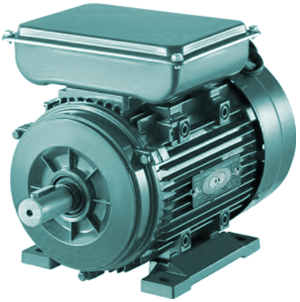GCSE Standard Questions: The Motor Effect
Q7. Motors change electrical energy into kinetic energy.

Look at the information about five different electric motors in the table below.
Electric motor |
Energy input per hour (J) |
Useful energy output per hour (J) |
Energy 'wasted' per hour (J) |
A |
72000 |
60000 |
12000 |
B |
54000 |
36000 |
18000 |
C |
18000 |
15000 |
3000 |
D |
60000 |
48000 |
12000 |
E |
54000 |
48000 |
6000 |
(a)
(i) Calculate the energy input per hour in J for electric motor D.
Energy input = Energy Output + 'Wasted' energy
Energy input = 48000 + 12000 
Energy input = 60000 J 
[2 marks]
(ii) Which electric motor has the lowest 'wasted' energy in one hour?
Motor C 
[1 mark]
(iii) Which electric motor has the highest 'wasted' energy in one hour?
Motor B 
[1 mark]
(iv) Describe how energy is 'wasted' in an electric motor.
Friction between moving parts causes unwanted heat and sound energy to be produced, and KE of particles to be passed to other particles in the surroundings.
[1 mark]
(v) Suggest how this 'wasted' energy can be reduced in an electric motor.
By reducing friction in the moving parts by using lubrication/oil. 
[1 mark]
(b) Calculate the % efficiency of electric motor E.
Give your answer to two significant figures.
Efficiency = Useful output energy transfer / Input energy transfer
E = 48000/54000 
E = 0.8888 
E (%) = 0.8888 x 100 = 88.88
E (%) = 89% 
[4 marks]
(Total 10 marks)







